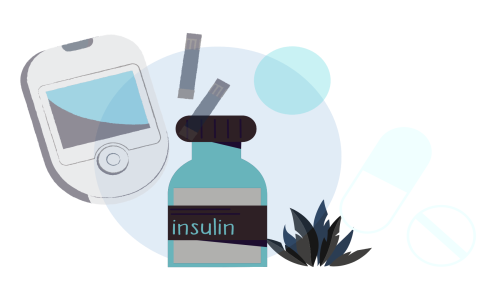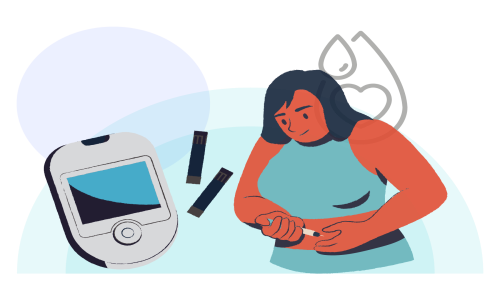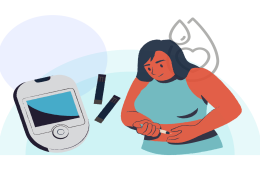Impact of health technology on diabetes management
Around 1 in 11 adults worldwide have diabetes, making it one of the most prevalent diseases in the world
Incidence of diabetes worldwide is around 450 million and is estimated to rise to 9.9% by 2024.

Around 1 in 11 adults worldwide have diabetes, making it one of the most prevalent diseases in the world. (1) Incidence of diabetes worldwide is around 450 million and is estimated to rise to 9.9% by 2024. (2)(3) Considering the rapid rise of the disease incidence, it is imperative that the health care providers use the rising tide of technology to supplement diabetes prevention.
Current landscape
Advances in health information technologies (HITs) have introduced a new landscape of effective health-care delivery using multiple mediums such as mobile, wearables, computer, and internet. All of these advances have shown promising results with regards to disease management and patient outcomes.
Health information technologies include a wide range of electronic tools such as systems, applications, and software. Use of HITs has reported to decrease the average levels of HbA1c using different mediums such as computer software without internet, cell phones, internet and telemedicine and telehealth. From amongst these, internet based interventions demonstrated the greatest reduction in HbA1c, whereas cellphone and automated telephone interventions showed the smallest reduction.
A growing number of research publications have focused on the impact of HITs on management of diabetes; however, these publications are not without their limitations. Across multiple researches, the limitations included limited number of trials, lack of adherence to standard quantitative methods, lack of attention to heterogeneity across studies, lumping of randomized and nonrandomized trials into evaluation and mixed participation of individuals with different types of diabetes. (1)
Future landscape:
As adoption of HITs increases, it is predicted that the next level of progress will be on the level of digital consumer engagement. Patients, who will be the primary digital health consumers, will require content-rich platforms that don’t just supplement the care that is given by care providers for disease management. The demand for social support, education and engagement will increase exponentially. (4)
Provision of digital health services will facilitate the collection of “big data” that can be used to drive personalized care for each individual. It is also possible to use these health technology components for health promotion and disease prevention from pre-clinical phases such as obesity and pre-diabetes.

These interventions are hypothesized to improve self-management efficiency, clinical course, personalized intervention, early screening and effective treatment of complications. (5)
Most importantly, future technologies aim to empower patients to make fully informed and educated decisions about their health. This promises to change the role of healthcare providers as sole keeper of knowledge about healthcare to patients becoming equal stakeholders in access to information about health.
Conclusion:
“P4” is a term that is often associated with future of medicine – prediction, prevention, personalization and patient participation. Many current health related technologies have already started moving towards the future and many more innovations are yet to come, that will make the goal of holistic medicine true. (5)
Bibliography
1. Yoshida Y, Simoes EJ. Health Information Technologies in Diabetes Management. Type 2 Diabetes [Working Title] [Internet]. 2019 May 21 [cited 2022 Jul 29]; Available from: undefined/state.item.id
2. Vieira P, Kobayasi R, Pereira F, Zaia IM, Sasaki SU. Impact of technology use in type 2 diabetes distress: A systematic review. World J Diabetes [Internet]. 2020 Oct 10 [cited 2022 Jul 29];11(10):459. Available from: /pmc/articles/PMC7582117/
3. Cho NH, Shaw JE, Karuranga S, Huang Y, da Rocha Fernandes JD, Ohlrogge AW, et al. IDF Diabetes Atlas: Global estimates of diabetes prevalence for 2017 and projections for 2045. Diabetes Res Clin Pract [Internet]. 2018 Apr 1 [cited 2022 Jul 29];138:271–81. Available from: https://pubmed.ncbi.nlm.nih.gov/29496507/
4. Kaufman N, Khurana I. Using Digital Health Technology to Prevent and Treat Diabetes. Diabetes Technol Ther [Internet]. 2016 Feb 2 [cited 2022 Jul 29];18(Suppl 1):S-56. Available from: /pmc/articles/PMC4761854/
5. Rhee SY, Kim C, Shin DW, Steinhubl SR. Present and Future of Digital Health in Diabetes and Metabolic Disease. Diabetes Metab J [Internet]. 2020 Dec 23 [cited 2022 Jul 29];44(6):819. Available from: /pmc/articles/PMC7801756/
Insights
-

No-Code Tools for Managing Mental Health and Burnout in Healthcare Settings
Read more“P4” is a term that is often associated with future of medicine – prediction, prevention, personalization and patient participation. Many current health related technologies have already started moving towards the future and many more innovations are yet to come, that will make the goal of holistic medicine true.
-

Impact of health technology on diabetes management
Read more“P4” is a term that is often associated with future of medicine – prediction, prevention, personalization and patient participation. Many current health related technologies have already started moving towards the future and many more innovations are yet to come, that will make the goal of holistic medicine true.
